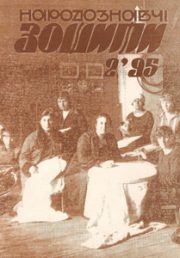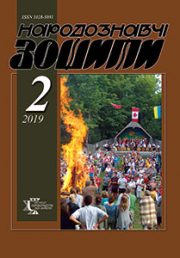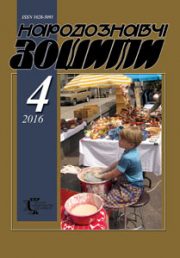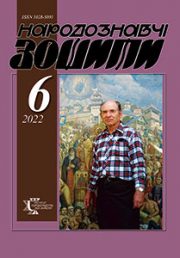The Ethnology Notebooks. 2020. № 3 (153), 503—511
INSURGENT MARTYROLOGIES AND RESEARCH ON NATIONAL LIBERATION MOVEMENTS BY HRYHORII DEMIAN
DOI https://doi.org/10.15407/nz2020.03.503
SOKIL Vasyl
ORCID ID: http://orcid.org/0000-0003-3164-1217
Doctor of Philology, Professor, Head of Department,
The Ethnology Institute National Academy of Sciences of Ukraine
Department of Folklore,
15, Svobody ave., 79000, Lviv, Ukraine,
Contacts: e-mail: vasylsokil@gmail.com
Abstract. The article is about H. Demian, one of the most authoritative researchers of the national liberation movements of the 1940s—1960s. He has devoted more than twenty years to the study of insurgency. After all, that was the meaning of his life.
The subject of research is the insurgent martyrologies — lists of those killed for the freedom of Ukraine, brief information about their life and battle path, heroic death. The lists also include victims of the totalitarian regime who were persecuted, imprisoned, died early. Martyrologies from Stryi district are used as a basis, especially the full-scale one from Skole district and some others. H. Demian, for the first time, developed methodological advice on what and how to collect for a full-fledged insurgent martyrologies, and indicated further search priorities.
The proposed article presents the scientific community with a series of researches by the scientist about national liberation movements of the specified period. It refers to the OUN-UPA insurgent movement in the 1940s—1960s in Skole district. H. Demian pointed to all its stages, the centers that formed in this area, the combat units, the mass and sacrificial movement of local heroes. There is a similar work on the Hutsulshchyna region in the OUN—UPA liberation struggle. Structurally, it has the features of a solid monographic research with introduction, main body, and conclusions. In the introductory part, H. Demian provided the historiography of the issue, and then showed the combat history of all UPA kurins in the region, their participants. Hence the purpose of our article is to show the work of H. Demian in this area, both practical and theoretical, to identify the principles and methods of work on this material, to evaluate the professional approaches of the researcher. This is what caused the relevance of the chosen topic.
The source base for writing this research were martyrologies concluded by H. Demian, as well as his research related to national liberation movements of the specified period.
Keywords: national liberation movements, Ukrainian Insurgent Army, kurin, platoon, martyrology, victimhood, heroism.
Received 19.05.2020
REFERENCES
Demian, G. (1998). How to prepare a rebel martyrologist for the area. Kyiv: Ukrayinska Vydavnycha Spilka [in Ukrainian].
Demian, G. (1995). Rebel Calvary. Khvyli Stryya (Pp. 115—142). Stryy: Shchedryk [in Ukrainian].
Demian, G. (Ed.). (1996). Insurgent martyrologist of Skolivschyna. Skolivshchyna (Pp. 302—725). Lviv: Instytut narodoznavstva NAN Ukrayiny [in Ukrainian].
Demian, G. OUN and UPA rebel movement in 1940—1960 s. Skolivshchyna (Pp. 136—196) [in Ukrainian].
Demian, G. (2000). Banderivtsi (Book 1). Kyiv: Ukrayinska Vydavnycha Spilka [in Ukrainian].
Demian, G. (2002). Materials on the OUN-UPA encyclopedia. Vyzvolnyj shliakh, 9, 54—69 [in Ukrainian].
Demian, G. (2002). Materials on the OUN-UPA encyclopedia. Vyzvolnyj shliakh, 10, 35—51 [in Ukrainian].
Demian, G. (2000). Hutsul region in the OUN and UPA liberation struggle. Istoriya Hutsulshchyny (Vol. 5, pp. 274—434). Lviv: Lohos [in Ukrainian].







